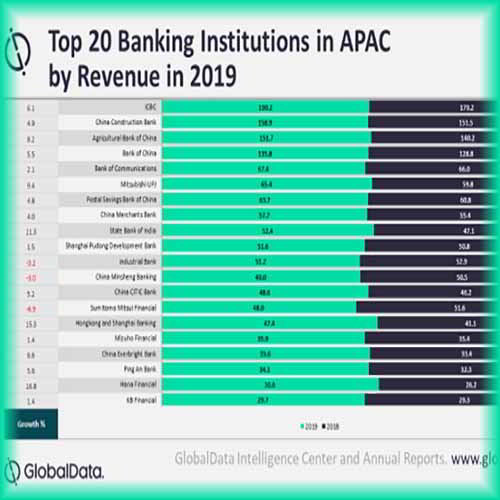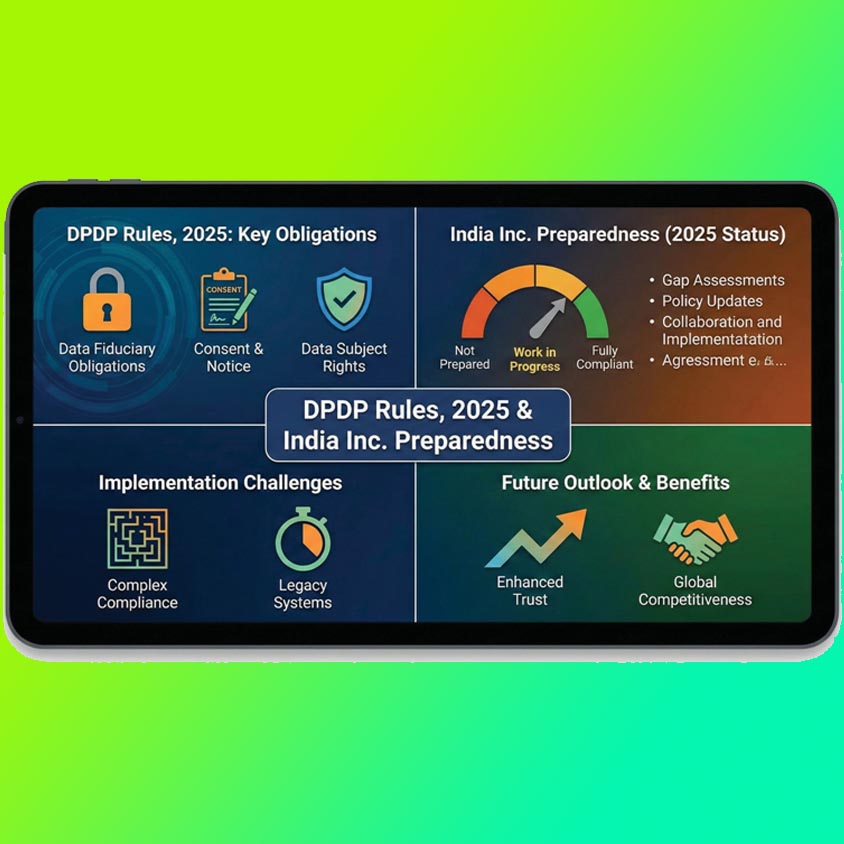
China has dominated the list of top Asia-Pacific (APAC) banks by revenue in 2019, with 13 banks from the country occupying the top 20 list, according to GlobalData, a leading data and analytics company.
Three banks from Japan, two from South Korea and one each from India and Hong Kong featured in the top 20 list. Overall, it was a steady year for the top 20 banks in APAC as their aggregate revenue increased by about 5% to US$1,405bn from US$1,339bn in the previous year, with 17 banks reporting y-o-y growth. Hana Financial, Hongkong and Shanghai Banking Corp (HSBC) and State Bank of India (SBI) managed to post a growth rate of above 10%.
Parth Vala, Company Profiles Analyst at GlobalData, comments: “Despite decline in interest margin, Hana Financial’s interest income bolstered on account of rise in interest-earning assets across its affiliates. The bank’s fee income from asset management business was on the downside. However, improvement in fees from credit card and sharp rise in M&A advisory fees enabled it to post growth in its non-interest income. In addition, the bank’s revenue growth was also attributable to the one-off items such as 110% growth in gains on valuation of overseas equity investments.”
HSBC benefited from increased lending transactions across its businesses in Hong Kong, India and Singapore, apart from a 51% growth in other operating income, which included favorable movement in the present value of in-force long-term insurance business in Hong Kong.
India’s largest bank SBI’s performance was buoyed by strong interest income from high quality corporate credit, greater focus on consumer lending and significant improvement in asset quality and control in slippages. Its non-interest income too witnessed a sharp rise due to net gains from investment sales, fees from credit card operations and income from insurance premiums.
Of the three banks that witnessed a revenue decline in 2019, Sumitomo Mitsui Financial suffered the most, with decline in net trading income from transactions related to interest rate and foreign exchange meant for economic hedges. Net losses from debt instruments, and decline in income from operating leases and disposal of leased assets also weighed on its overall revenue growth.
Vala concludes: “With COVID-19 already presenting uncertain scenarios in 2020, banking regulators across APAC have taken several measures such as cuts in policy rates, liquidity infusions and stimulus to affected industries. However, it is very likely that the pandemic would substantially expand non-performing portfolios and hence the banks would need to provide more funds to cover probable credit losses. What could be seen as a silver lining in this chaos is that the pandemic has forced the banking sector to accelerate its digital transformation activities.”
See What’s Next in Tech With the Fast Forward Newsletter
Tweets From @varindiamag
Nothing to see here - yet
When they Tweet, their Tweets will show up here.





























